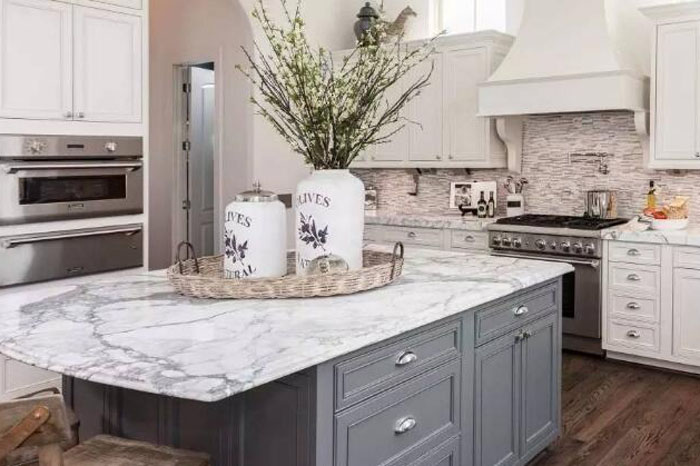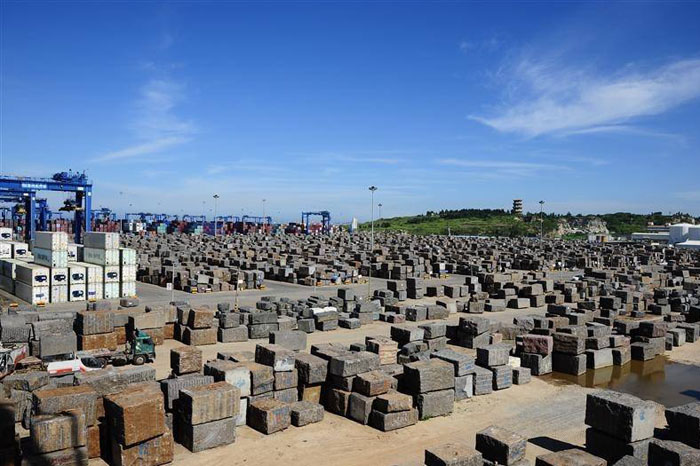Marbles are widely distributed, and are exposed in the precambrian shields and blocks around the world where the Mesozoic and Paleozoic metamorphic activities occurred. Other metamorphic rocks coexist, some are produced as interlayers of varying thickness, and some are mainly marble interspersed with other metamorphic rocks, which can reach hundreds of meters in thickness. Marble is a rock formed by metamorphism of carbonate rocks in sedimentary rocks. Next, let's take a look with Jiahao editor. What kind of rock is marble? The characteristics of marble.

One, what kind of rock is marble
Marble is a kind of metamorphic rock. It is a rock formed by metamorphism of carbonate rocks in sedimentary rocks. It is named after being produced in Dali, Yunnan, China. The main minerals are recrystallized calcite and dolomite, which are identifiable by the naked eye and produce bubbles when exposed to dilute hydrochloric acid. In addition, it contains wollastonite, talc, tremolite, diopside, plagioclase, quartz, periclase, etc., usually white and gray marble.
The picture is provided by registered user "Orange de Palace", copyright notice feedback
Pure marble is white, with various variegated colors when containing impurities, with beautiful stripes. It is the main decorative building stone and carving stone. The compressive strength of the rock block varies with the cementation and size of the particles, generally 49.0-117.7MPa, which can be used as the foundation of a building. Because it is easy to dissolve in water, there are various karst phenomena, which will cause leakage and collapse of the reservoir, which requires attention and engineering treatment.

Second, what are the characteristics of marble
1, mineral composition
Marble is formed by limestone, dolomitic limestone, dolomite and other carbonate rocks through regional metamorphism and contact metamorphism. The content of calcite and dolomite is generally greater than 50%, and some can reach 99%. However, except for a few pure marbles, general marbles often contain a small amount of other metamorphic minerals. Due to the different types of impurities contained in the original rocks (such as siliceous, argillaceous, carbonaceous, iron, pyroclastic materials, etc.), as well as the differences in temperature, pressure and aqueous solution content of metamorphism, the associated The types of minerals are also different.
2, structure
Marble generally has a typical granular metamorphic structure. The grain size is generally medium to fine grains, sometimes coarse grains. The calcite and dolomite particles in the rock form a compact mosaic structure. In the marble formed by metamorphism in some areas, the optical axis of calcite is arranged in a directional manner, which makes the marble have strong light transmission. If some marbles can transmit light 2 cm, the light transmission of individual marbles can be Up to 3 to 4 cm, they are excellent engraving materials. The structure of marble is mostly block structure. There are also many marbles with different sizes of stripes, stripes, patches or spots. After processing, they become decorative building materials with different colors and patterns.
3, color characteristics
In addition to pure white, some marbles have various beautiful colors and patterns. Common colors are light gray, light red, light yellow, green, brown, black, etc. The main reason for the different colors and patterns is that the marble Contain a small amount of colored minerals and impurities. For example, the marble composed of manganese-containing calcite is pink, the marble containing graphite is gray, the serpentine is yellow-green, and the chlorite, actinolite and diopside are green. Phlogopite and granular wollastonite are yellow, while Fushanite and mayonnaise garnet are brown.